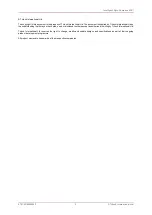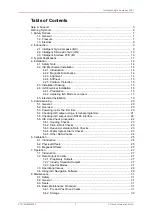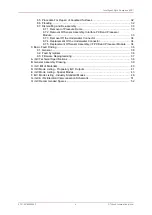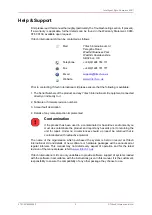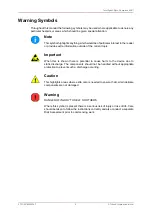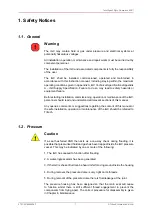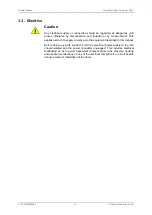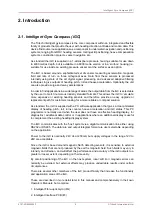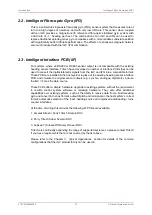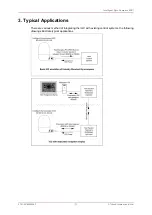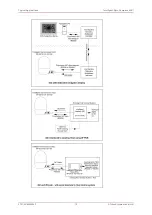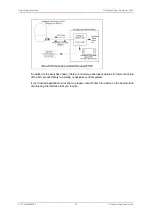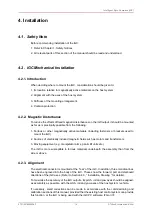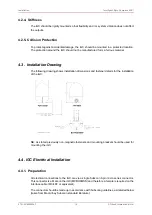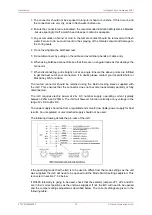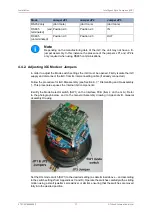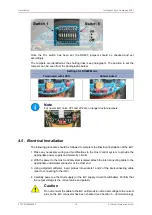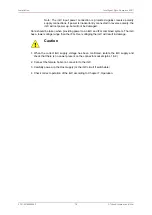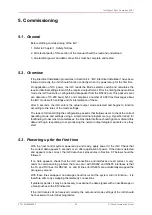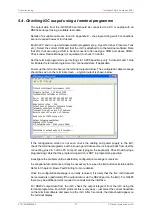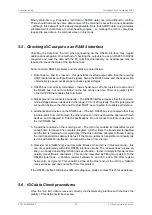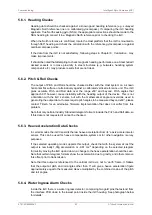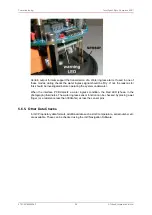
Intelligent Gyro Compass (iGC)
0707-SOM-00004-7
9
© Tritech International Ltd.
2. Introduction
2.1. Intelligent Gyro Compass (iGC)
The Tritech intelligent gyrocompass is the core component within an integrated and flexible
family of products that provide the user with heading direction, attitude and motion data. This
device finds numerous applications as a component in underwater navigation and positioning
systems, ranging from ROV heading sensors, tooling skid positioning, heave compensation
systems, construction projects, vessel navigation etc.
As standard the iGC is supplied in a 1-atmosphere pressure housing suitable for use down
to 4000 metres depth, but is available in a 6000 metre version or in a ‘surface’ housing (i.e.
suitable for use inside an existing pressure vessel or at the surface) as an option.
The iGC is based around a sophisticated set of sensors measuring acceleration, magnetic
field and rate of turn on three orthogonal axes. Data from these sensors is processed
internally using state of the art digital signal processing and advanced adaptive filtering
techniques to give outputs of heading, pitch, roll and heave acceleration. Optionally, the unit
can also provide surge and sway accelerations.
In order to find applications in a wide range of areas, the output data from the iGC is selectable
by the user to match numerous industry standard formats. This allows the iGC to ‘emulate’
more expensive or existing heading sensors and therefore provide an easy upgrade or
replacement path for customers looking for a more reliable or compact solution.
As standard, the iGC is supplied with a PC software application that gives a clear animated
display of heading, pitch, roll, turns counter, heave acceleration and iGC status. This PC
programme is normally used when the user does not have an effective heading display, for
diagnostics / additional data control or in applications where an additional display is useful
to complement the existing heading display system.
The iGC communicates with the ‘host’ system via a digital communication link, either using
RS232 or RS485. The data rate and output telegram format are user selectable depending
on the application.
Power to the iGC is nominally 24V dc at 250mA, but supply voltages in the range 12V to
26V are acceptable.
Since the iGC is based around magnetic North detecting sensors, it is sensitive to external
magnetic fields that are not produced by the earth’s magnetic field. Such fields may vary in
intensity and direction, and will affect the performance and accuracy of the iGC outputs to a
greater or lesser extent, depending on their severity.
By careful positioning of the iGC on the host system, local ‘soft iron’ magnetic errors can
normally be avoided, but external effects may produce undesirable results under certain
circumstances.
There are several other members of the iGC product family that increase the functionality
and application areas of the iGC.
These are described in more detail later in this manual and comprehensively in their own
Operators Manuals, but comprise:
1. Intelligent Fibre-optic Gyro (iFG)
2. Intelligent Interface PCB (iIF)


